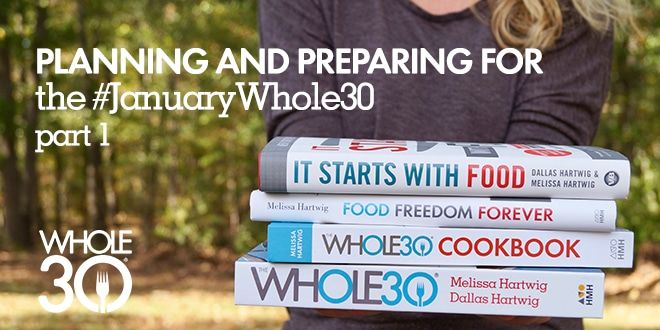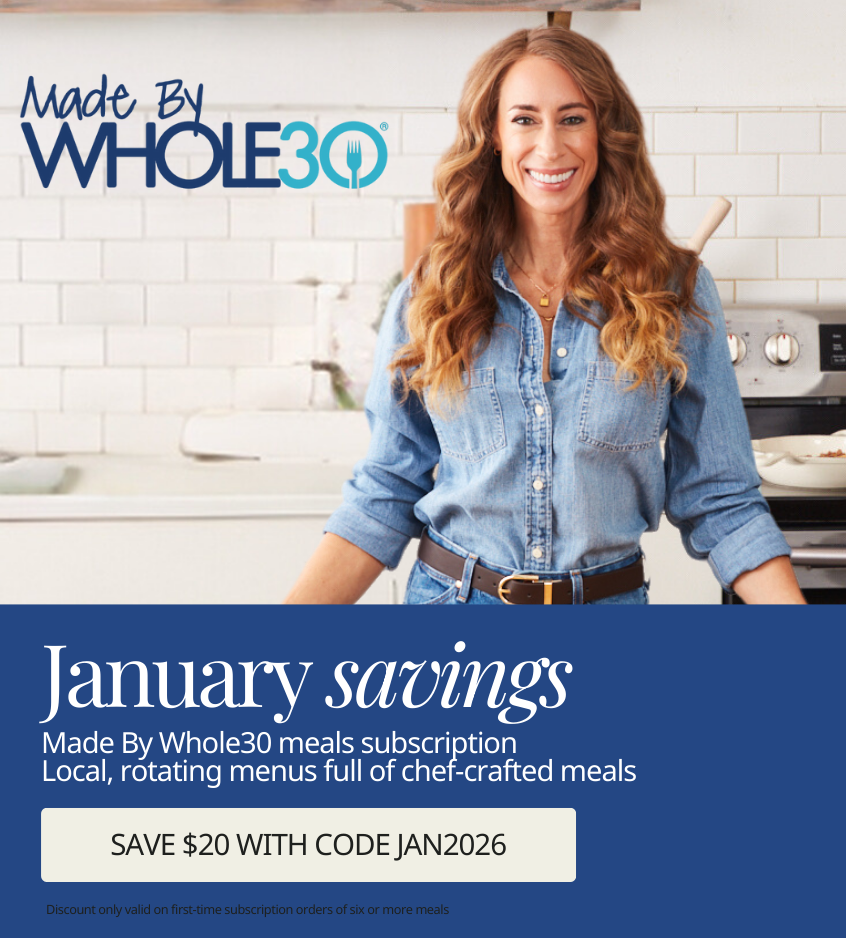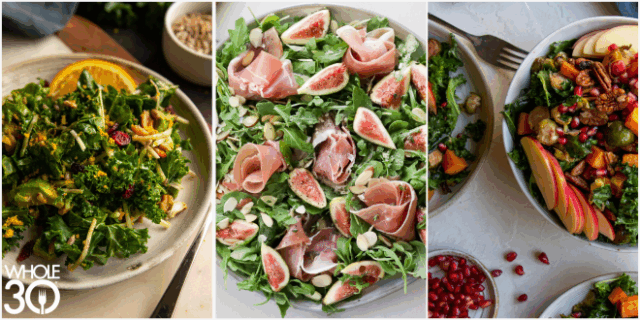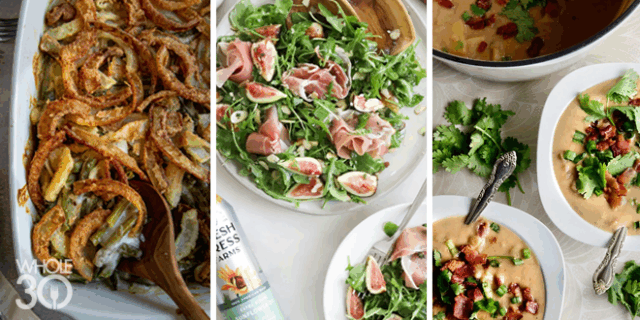By Sarah Steffens, L.A.-based personal chef and official Whole30 Recipe Creative
January is right around the corner and the the New Year is traditionally a time for cleaning up your diet, beginning your fitness routine, getting out of debt, finding the love of your life… the list goes on! It should come as no surprise that January is also one of the most popular months to start—what else—a Whole30.
If you are pondering joining us for the #JanuaryWhole30, read on. I’m sharing with you the 5 tips I use to prepare myself and my clients for a life-changing 30 days.
Tip #1: Clarity Moves You Forward
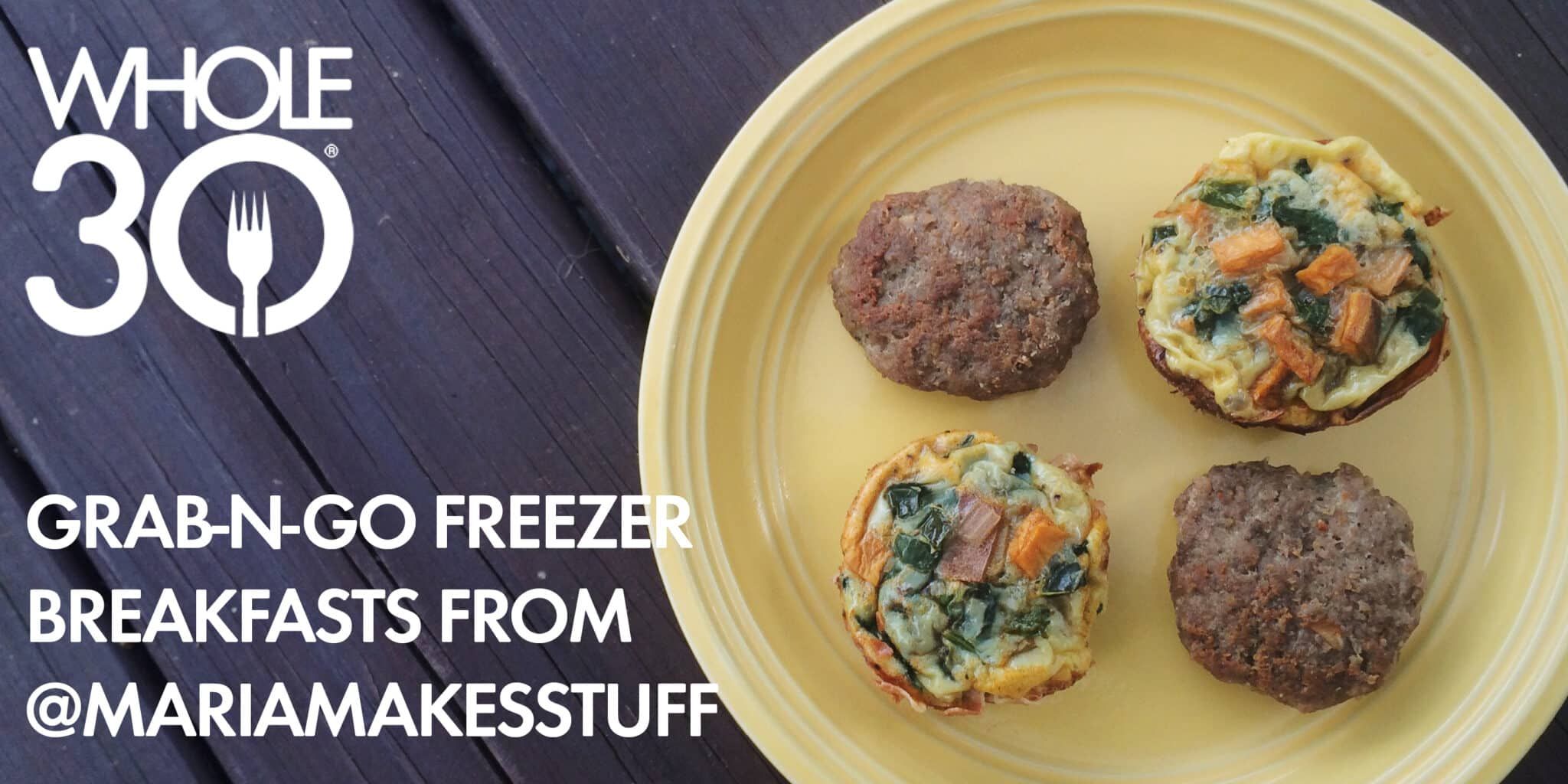
Before we dive into the Whole30 rules and meal planning and prepping, I think it’s important to spend time getting extremely clear on why you want to complete a Whole30. Before I start a Whole30, I sit down with pen and paper and get all of the drama of it out of my head and onto the page. I write my hopes, my fears, and, most importantly, I write so I can figure out if I truly want to do a Whole30. Being fearlessly unafraid to discover and own my wants in life (and with food) is clarity.
Thinking about doing a Whole30, fantasizing about my results, or dreading how difficult I assume it will be is simply drama, a story I tell myself that keeps me from truly living a conscious and deliberate life. Committing to a Whole30, discovering my results while courageously embracing the journey is my personal and authentic experience, and to be cherished as it will take my Whole30 to a new level of radical and pleasurable transformation. Knowing why I want to do a Whole30 (or why my clients do), is always first on the priority list for getting ready for the actual program.
Tip #2: Lifestyle Matters
Now it’s time to start the physical lifestyle prep for your Whole30. We often think preparing for a Whole30 is all about the food (and it certainly is about the food!), but it is also about getting enough sleep, finding ways to cope with difficult situations without food, managing stress and having confidence in yourself to be at peace with your decision-making during your 30 days on Whole30.
When preparing for your January Whole30, think beyond grocery trips and new recipes and allow yourself to consider the other essentials that will support your new food habits. Put your best comfy sheets on your bed (you are going to be getting the best sleep of your life!). Think through the specifics of what your social life will look like for the next 30 days, anticipate all of your obstacles, and make a plan for what you’ll do when you face them.
Perhaps you can suggest meeting up with your besties at a local coffee shop instead of the bar for happy hour, or making sure you’ve already eaten your Whole30 lunch before heading to the office work party. Figure out a strategy to deal with cravings (how will you ground yourself when you don’t feel like saying “no thank you” to that favorite treat?). Check out page 26 in The Whole30 for more planning strategies.
I also recommend choosing a non-food item to use all month long to remind you of your intention. Here are some of my favorite ideas:
- Light a candle at a designated time each day as a symbol of your new path with food.
- Identify a fragrance to associate with your new habits. Perhaps treat yourself to a new perfume or cologne. I personally love diffusing essential oils.
- Purchase a box of herbal tea and sip it daily as a reminder that you are intentionally nourishing your body and mind.
- Listen to a song that radiates life into your being while remembering that your life is worth honoring and protecting with the best self-care you can possibly manifest.
Tip #3: Time for food
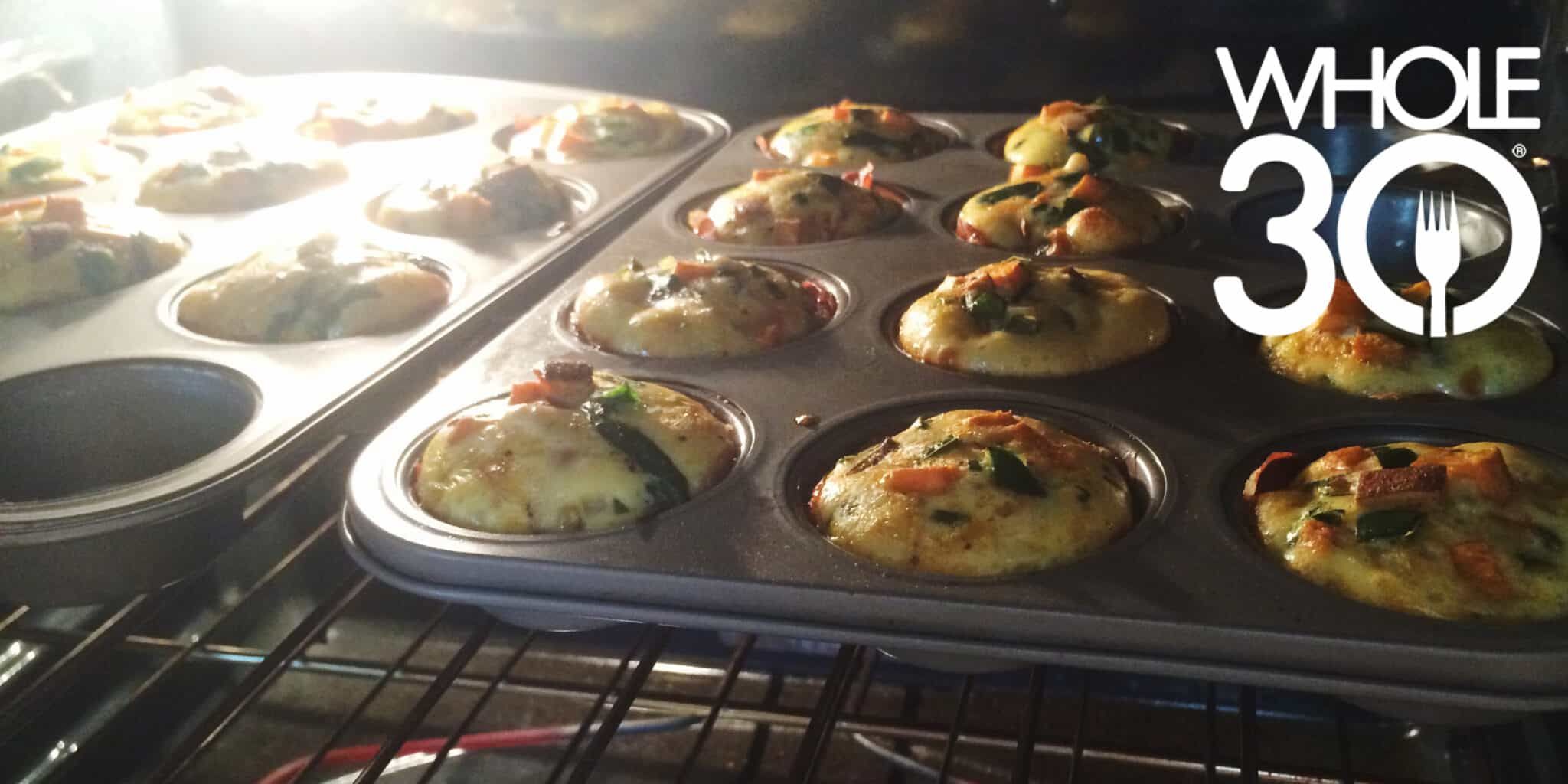
Now that you’re clear about why to do a Whole30 and have made sure your lifestyle supports it, it’s time to get clear on what foods you will focus on eating for the next month. Review the Whole30 rules on page 13 of The Whole30 so that you know what foods are and are not compatible with the program.
Make room in your refrigerator and pantry. Follow the instructions on page 22 of The Whole30 to prepare your kitchen for the next 30 days. Feel free to store what you won’t be eating in another room (or toss it, or give it away, you have our permission!). Do whatever you need to do to make choosing Whole30 foods accessible, easy and stress-free.
Tip #4: Meal prep
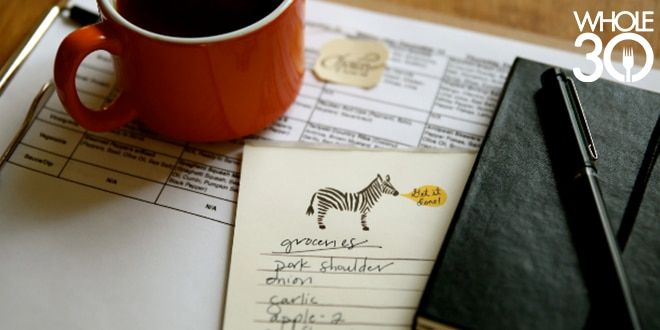
You might be dreading this part of your Whole30, but with awareness and flexibility for what works for you, it can be easy and even enjoyable to plan your month of meals. While some people do well with spreadsheets listing an entire month of meals, others do better with only one week, others, a few days, and still others, just one day of meals at a time. Know thyself, and do what works for you.
I plan my clients’ meals for a week at a time. I use an Excel spreadsheet and divide meals between breakfast, lunch, snack and dinner (dinner is broken down by protein, veggie, salad, vinaigrette and a special sauce or dip).
When planning for myself, I find it most pleasurable to weekly stock up on the following:
- About 5 proteins to serve at dinner throughout the week.
- 7 or so veggies to cook in various ways (roasting, sauteeing, steaming or chopping in a salad).
- A carton of eggs for quick meals done right.
- Seasonal fruit to include with meals.
- A few fresh herbs to keep meals flavorful.
- Healthy fats such as avocado, coconut, olives and nuts and seeds.
- Staples such as onion, garlic and whatever root veggies are in season.
Items that I always have on stock (on and off Whole30) because I love them so much:
- Cooking Fats
- Ghee, Coconut Oil, Sesame Oil, Coconut Butter, Olive Oil, Avocado Oil
- Apple Cider Vinegar, Balsamic Vinegar, Coconut Vinegar, Coconut Aminos and Fish Sauce, Sauerkraut
- Cinnamon, Turmeric, Garlic Powder, Smoked Paprika
- Nuts and seeds
- Sprouted Pumpkin Seeds, Tahini, Sunflower Seed Butter
I tend to work with my weekly groceries and staples to create delicious Whole30 meals without an official menu, and this works for me since I am in my kitchen much of the time and since I menu-plan for a living, ideas come quickly. However, this is rare and not the case for most, so I realize how essential it is to plan, plan, plan.
If you are more like me, finding it natural to prepare meals as needed, feel free to run your Whole30 this way, more free-flowing. If you want to plan a few days in advance or even cook several of your meals in advance, do this, because this will work for you. If you want to plan for the entire week, or even the entire month, definitely do it.
The important thing to keep in mind is that you should do what works for you and let others do what works for them.
If you want specific meal planning support, check out the Real Plans Whole30 planner. It plans 30 days of Whole30 meals in five minutes, and has so many special features baked right into the program.
Tip #5: Kitchen tools
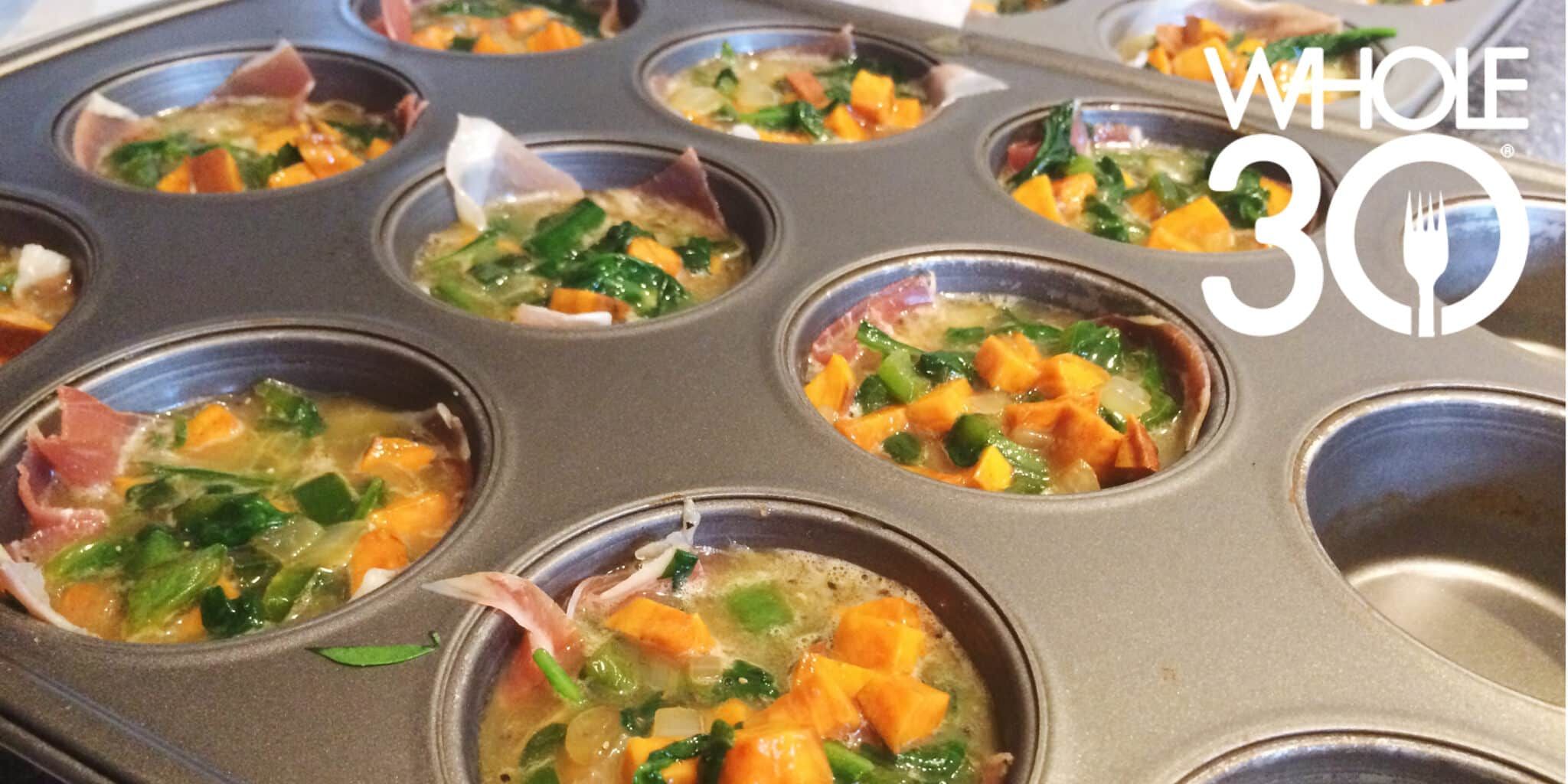
Whole30 requires a lot of cooking, so it’s worthwhile to invest in a few high-quality kitchen tools. Here’s what I find incredibly helpful to have in my own kitchen:
- A cast iron skillet and a metal spatula. Used on the stove, or in the oven, cast irons make everything taste amazing.
- A steamer basket. These are a few dollars at your local market and can make cooking veggies so effortless.
- A sharp chef’s knife. I get my knife sharpened every few months and it is worth it every single time.
- A baker’s spatula. I love my baker’s spatula and I rarely bake. I use it all of the time when tossing salads and serving pureed veggies and sauces.
- A high-speed blender. I use a Vitamix, an investment ‘worth-it’ for me, but any blender is helpful when making sauces, dressings, and purees.
- A grater box or hand-held spiralizer. Veggies are pleasurable to eat when prepared in different textures, such as shredding, slicing, spiralizing and these handheld tools get the job done.
Click here for a comprehensive list of kitchen tools recommended by the Whole30 team.
We’ve covered a lot so far, so take some time to consider how these tips fit into your life. Keep an eye out for part two, where I will share some of my favorite Whole30 recipes to make ahead.
Header photo by Laura Meiner


